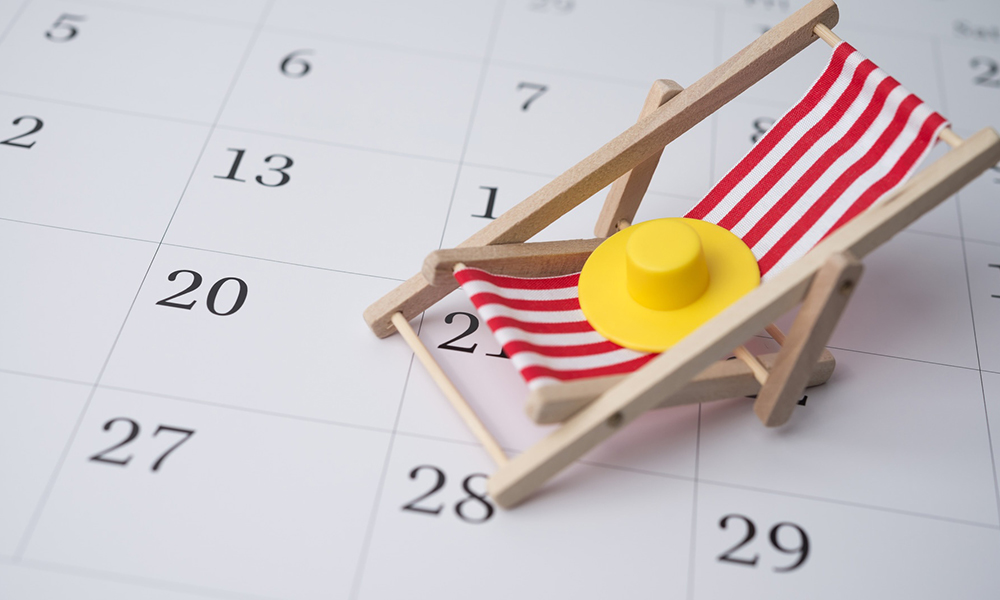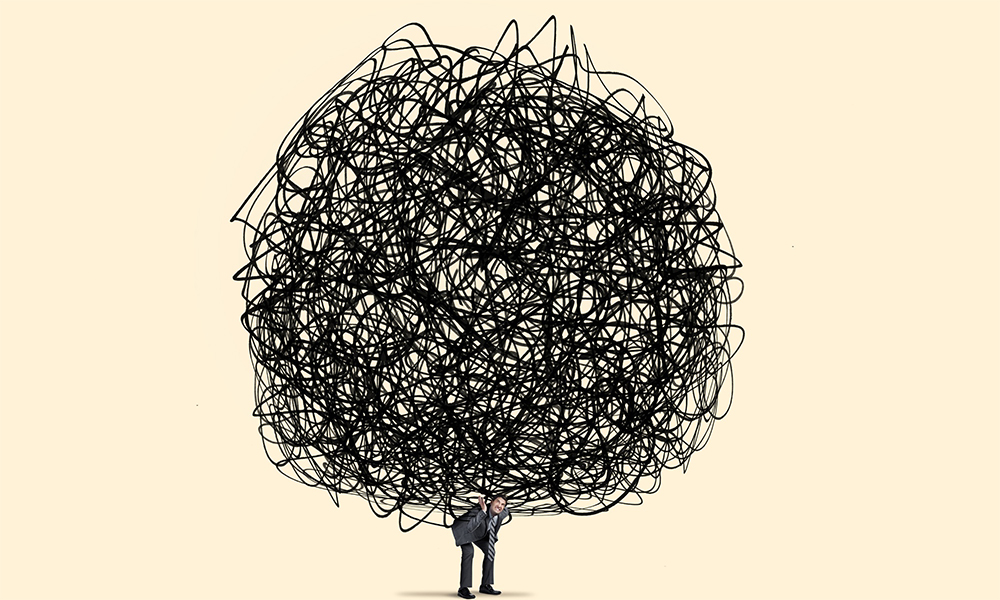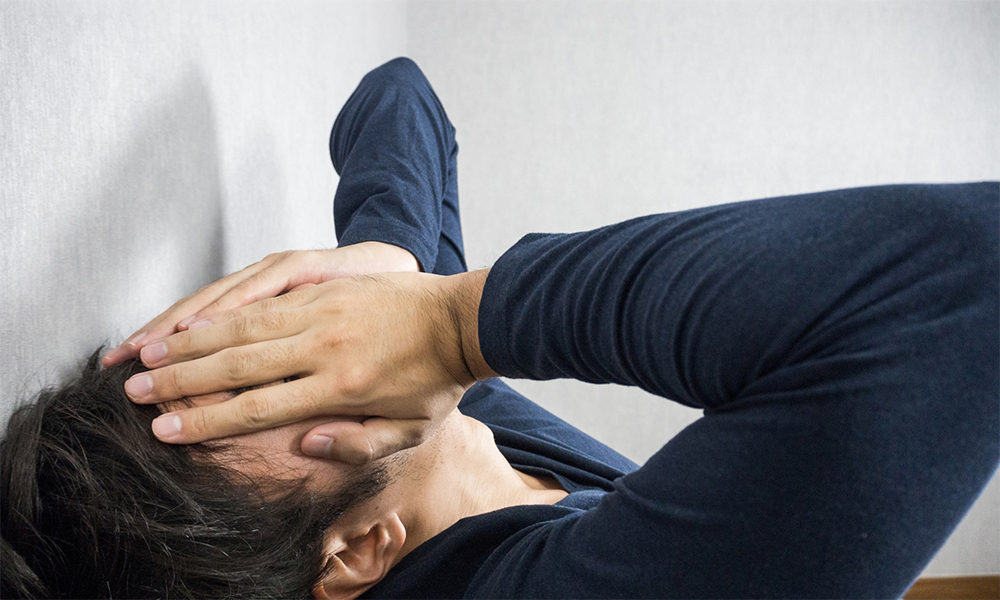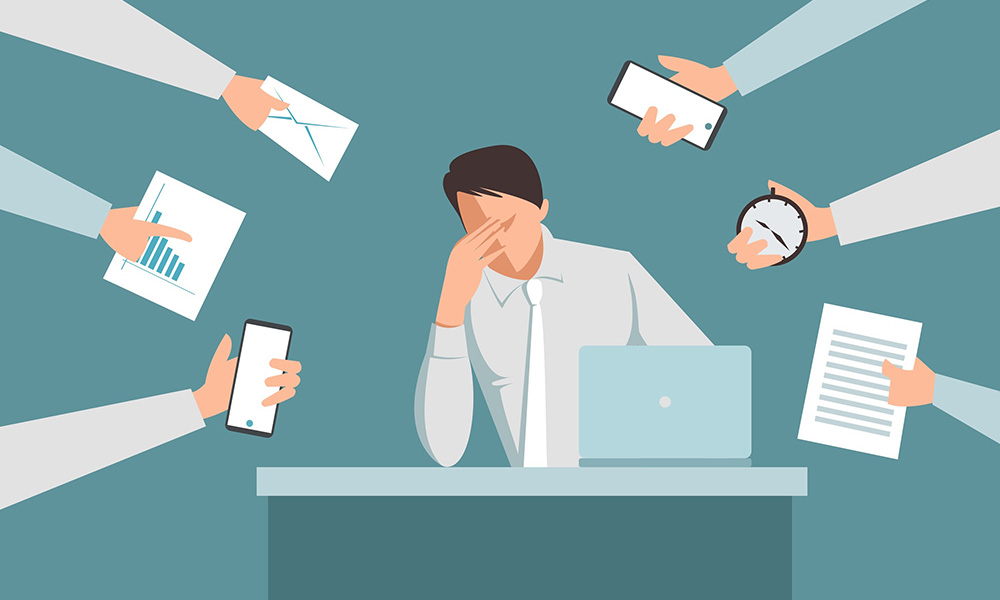Throughout the day, we deal with various annoyances and irritants. These can range from getting stuck in traffic, meetings that go on and on, someone not meeting a deadline, a surprising resignation at work, someone being negative at work etc. The list can go on and on. While individually these are minor distractions, the accumulation of these triggers can wear us down.
Authors and researchers Rob Cross and Karen Dillon coined the term “microstresses” – small moments of stress that seem manageable on their own but accrue over time. Because of their hidden nature, microstresses are often hard to detect until you’re overwhelmed by them.
This week, my message focuses on microstresses. How do they occur and what do they feel like? And what steps can you take to prevent them from building up and derailing you?
Stress versus microstress
Big, obvious stress is well-documented and easy to recognize. But the smaller stresses often slip by unnoticed. Think of an urgent request you receive from a team member just as you’re about to clock out for the day or having to put in extra time on a project because a colleague fell short.
Each such microstress can cause a ripple effect of additional microstresses. Because you need to work overtime, you may need to cancel plans with a friend or ask your spouse to pick up the slack at home, which makes you feel guilty. The commute back feels extra stressful, causing you to snap at loved ones, which in turn creates an atmosphere of tension at home. Since your mind is troubled, you find yourself unable to sleep well and wake up feeling tired the next morning. In this way, a single microstressor creates a snowball effect, exerting a heavy toll on your state of mind as well as your physical wellbeing.
Microstresses have become so much a part and parcel of our lives that we barely even register them most of the time. What makes them even harder to spot is that there is no clear “villain” to blame. Unlike classic stress, which can often be attributed to a bad boss or troublesome client, these smaller moments of stress are often triggered by people we like and are close to – colleagues, friends, family members.
What’s more, you generally deal with dozens of microstresses each day, worsened by 24/7 connectivity. While they appear manageable in the moment, these small stresses tend to accumulate until they pack a hefty collective punch.
Like stress, microstress too plays out at a physical level. It increases your heart rate and blood pressure, and triggers metabolic and hormonal changes. Since our exposure to microstresses is ongoing, they can keep our bodies and brains in a constant state of low-grade anxiety. Additionally, these small stresses can shrink working memory. This is why so many people experienced “brain fog” during the pandemic, regardless of whether they actually had Covid-19. The sheer volume of microstresses took up valuable brain bandwidth, leaving us with little attention and focus to spare.
In an HBR piece, Cross and Dillon explain that:
Microstress is pernicious because it is part of our everyday lives at a greater volume, intensity, and pace than we have ever experienced before, and that’s only increasing with technology and ubiquitous connectivity. And our bodies don’t quite know what to make of it.
Small stressors often slip under the brain’s radar, failing to trigger the fight-or-flight response that helps you manage classic stress. This allows microstresses to keep piling up unnoticed, which eventually damages your wellbeing, productivity and relationships.
The authors classify microstresses into three key categories:
- stresses that drain our personal capacity
- stresses that deplete our emotional reserves
- stresses that challenge our identity or values
Tackling microstress
Conventional advice for dealing with stress includes strategies centred around mindfulness, resiliency and gratitude. When it comes to microstresses, however, experts suggest it might be better to remove some of the sources at their root.
While the small stressors of life cannot be entirely eliminated, here are six suggestions to help you curb and manage their impact:
1. Identify your microstressors.
Because of its fleeting, almost-invisible nature, microstress can be hard to recognize. You may feel on the verge of burnout without quite knowing why. After all, there are no big sources of stress in your life…so why do you feel overwhelmed? If this rings a bell, I suggest completing the diagnostic shared by the researchers in their HBR piece, which will help you identify the key causes of microstress in your life.
2. Practice tangible ways to reduce microstress.
Find concrete ways to push back against your drivers of microstress. Are relentless notifications causing you mini-bursts of anxiety through the day? Work towards developing a healthier relationship with technology, such as turning off email notifications, checking your inbox at scheduled times, and getting off platforms that send your blood pressure skyrocketing. Do you find your schedule frequently derailed by other people’s requests for assistance? Learn the art of saying “no” to small but draining asks, so you can safeguard your peace of mind and attention.
3. Avoid being a source of microstress.
Science shows that a negative interpersonal interaction is five times more powerful than a positive one. That means our day-to-day interactions have the potential to become a minefield of microstress.
When you cause microstress for someone else – a co-worker, family member or friend – it not only hurts them but also ricochets back towards you, thus creating a cycle of microstress. For example, if you are curt with a colleague or your spouse, their irritation and resentment will generally swing back in your own direction – and possibly trigger a series of stressful interactions. Creating less microstress translates to experiencing less microstress, so make an effort to be more mindful, patient and civil.
As a leader, it’s even more important to avoid being a source of stress. Simple changes in the way you communicate can reduce the burden microstress for your team. For instance, resist the urge to send requests during personal hours, write emails with clear bullet points instead of lengthy paragraphs, and don’t be passive-aggressive in your interactions.
4. Build a healthy perspective – and a vibrant life.
One of the reasons those little stressors have a disproportionate impact on us is because we let them. This is not to imply that we should ignore microstress and pretend it doesn’t exist. Rather, it suggests we should learn to keep things in perspective. One way to do this is to create a life that is purpose-led, rich and multi-dimensional – a suggestion offered by the researchers mentioned above.
When we have meaningful work, pursuits and relationships in our life, we naturally become more resilient to microstress. We are able to recognise small stressors for what they are and allow them to simply roll off our backs.
5. Breathe and hydrate.
Since all microstresses can’t be eliminated, it’s also good to find ways to manage their impact on an ongoing basis. Breath is a powerful tool that is always at our disposal. When faced with a microstressor, practice mindful breathing to instantly undercut the physical response and calm your mind and body alike. Regulating your breath brings down heart rate and blood pressure, and consciously anchors you in the present moment.
Staying hydrated is also great for keeping stress levels in check. Don’t consume excessive amounts of caffeine and alcohol on a daily basis; these drinks can exacerbate the impact of microstress, leaving you feeling even more burned out.
6. Spend time with de-stressors.
Microstress can be contagious. We tend to “absorb” stress from people around us, which drains our energy and leaves us feeling inexplicably tired – a problem that may be worse for those who are deeply empathetic or emotionally sensitive. As far as possible, try to limit your interactions with such people. Instead, spend more time with those who give you positivity energy and make you feel joyful and revitalized.
If you feel like you’re constantly in “survival mode”, microstresses could be the culprit. These small, seemingly manageable moments of stress can add up until they exact a heavy cost on your wellbeing and productivity. Consciously tweaking some of your daily habits can help stop the energy drain and enable you to feel in control of your time and attention once again.
PS If you are interested in learning more about this topic, I would suggest picking up a copy of “The Microstress Effect: How Small Things Create Big Problems – and What You Can Do About it”, written by Rob Cross and Karen Dillon, that has just been released.








Comments